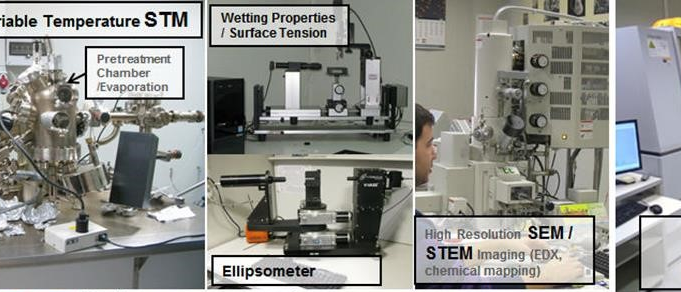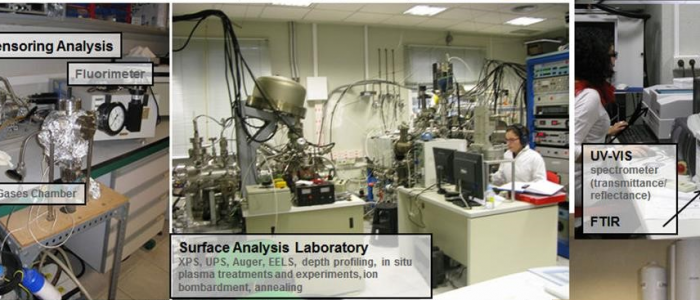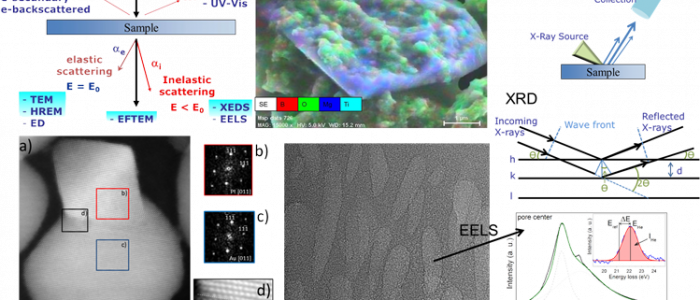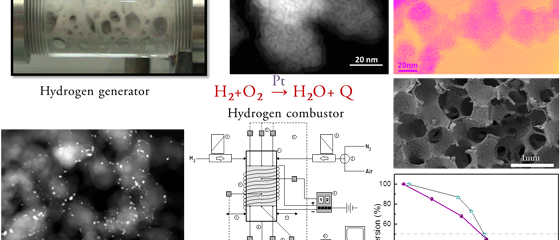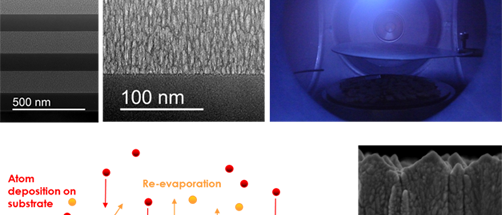The Nanostructured Functional Materials research Unit
The Nanostructured Functional Materials (NFM) research Unit is a Research Department of the Materials Science Institute of Seville (Instituto de Ciencia de Materiales de Sevilla , ICMS) , a join center between the Spanish Council of Research (Consejo Superior de Investigaciones Científicas, CSIC) and the University of Seville. It is the sole research Institute on Materials Science and Engineering in the south of Spain and one of the ten Institutes in this discipline within CSIC. The NFM research unit, officially created in 2010, carries out high quality research in the field of functional coatings, thin films, supported nanostructures and surfaces, mainly through the development and application of advanced processing methods by vacuum and plasma techniques (V/P). The NFM unit integrates 13 permanent researchers, from CSIC and the University of Seville, 2 staff engineers from CSIC and a variable number of contracted engineers as well as pre- and postdoc-personnel. At the time of writing this proposal, the number of contracted people and/or students amounts to 15.
Scope
The main scope of the NFM unit is to carry out high quality scientific research in the field of surface functional materials, the development of prototype devices based on them and its transfer to the industry, society and other key stakeholders. To comply with this mission the unit possesses the required critical mass, equipment and expertise to carry out a profound multidisciplinary research that has already given rise to well-founded reputation both in Spain and in Europe in the field of Surface Engineering. Achieving this impact has been possible thanks to systematic efforts of the research personnel, that have been working more than fifteen years in this area. This impact has clearly risen in the last seven years after the official recognition of the NFM unit, a feature that has permitted to launch common initiatives to afford more ambitious endeavors, such as the creation of the LANE laboratory , the leading role in a CONSOLIDER project and a CONSOLIDER network on surface functionalization of materials. This has also thrusted a very active technology transfer policy, both to the industry and other stakeholders, as demonstrated by the numerous patents and industrial projects done during the last years. In parallel, the international impact of the unit has culminated in several achievements, such as participation and coordination of EU projects, supervision of international researchers and fellowships and a continuous increment in the impact factor and visibility of our publications.
Research focus
The research activity of the unit has progressed from a classical approach in surface technology, focused on the synthesis of compact and homogeneous thin films, to another more oriented towards functional applications through the incorporation of simulation tools and the last advances for the control of the nano- and micro-structure of the materials. An original strong point in the current research activity of the unit relies in the merging of concepts borrowed from wet chemistry and those from classical vacuum and plasma-based techniques, with the final goal of controlling the nanostructure of materials at room temperature and on any kind of substrate material and surface area. This transversal approach has permitted to develop new structures which, in the form of a large variety of thin films and supported nanomaterials, permit to apply concepts such as low dimensional materials, hierarchical porosity, 1D-nanostructures, nanocomposites or nanostructured multilayers which are not common in the field of Surface Technologies. A related activity derived from the high expertise in plasmas is the development of gas phase processes for gas synthesis or removal of contaminants. These developments have open a vast range of potential applications in domains linked with the so-called key enabling technologies such as photovoltaics, sensors and responsive systems, tribology, hydrogen storage, photonics, piezoelectricity, biomaterials and others where new emerging methodologies are expected to outperform the classical approaches. The scientific impact resulting from this activity has been recognized by the consecution of key advances and breakthroughs, for example, accounting for the explanation of basic processes of thin film growth at glancing angles, the growth of supported 1D nanowires by evaporation and plasma methods, the development of hybrid deposition methods combining plasmas and evaporation, among others. Most of these results have been published in highly ranked journals in material science or in topical application areas (e.g., Adv. Mater.; Ener. Environm. Sci.; Prog. Mater. Sci: ACS Nano; ACS Catalysis, Nanoletters, Nanoenergy, etc.), clearly demonstrating that their impact transcends the classical surface engineering approach.
Infrastructure
A critical issue when dealing with nanomaterials, either in bulk or, as in the present case, in the form of supported nanostructures, is the availability of the best characterization tools concerning the different relevant aspects of these layers (i.e., chemistry, nanostructure and structure of these systems). The NFM unit has made a considerable effort in generating the necessary expertise in characterization tools and, specifically, has carried out a decided policy in promoting expertise in advanced techniques such as photoemission or electron microscopy, techniques in which researchers from the unit are considered a reference within Europe. As a result of these efforts, the NFM laboratories are at present within the best equipped in the EU in its field and dispose of one of the best trained personnel team in Europe in this scientific area. The research unit also benefits from the CSIC services at national level and from the local scientific and technical environment, including in the team advanced users in the facilities from several Andalusian universities (Seville, Malaga, Cádiz and Pablo de Olavide). Fruitful collaborations with experts in different fields of advanced characterization all over EU (University of Cambridge in UK, CEA-Leti in France for TEM, Prof. Tougaard in Denmark for XPS…) have fostered a positive impact for the endeavors of the unit in this specific area. It is noteworthy that the complementary expertise of their researchers, including experts in plasma, nanomaterials, physical properties, chemical reactivity, surface analysis, etc. has open panoply of possibilities to afford ambitious and quite innovative projects in the field. These singularities of the NFM unit have received an ample recognition worldwide, exemplified by the participation of its members in EU projects (6 within the last 5 years), in some of them as coordinators, the impartation of invited conferences in well-recognized international conferences (26) and seminars (14), the organization of more than 16 international congresses and symposia and the participation of one of the researchers as a member of the “European Science Foundation Scientific Committee on Material Science” during this period.
Transfer of technology
Transfer of research results to the industry has always been a target priority in the NFM unit since its foundation. A rough estimate of the funds received during the last five years in industrial projects, either directly or through collaborative projects within the framework of public openings amounted to more than 1.4 M€ in the last five years. During this period, the unit has presented and got approved 8 Patents, some of them extended to EU and USA and 3 of them held by private companies, as a result of projects directly funded by them. Transferred results cover a wide range of applications (sensors, detecting gas leaks in solar collecting tubes, bioactive surfaces, detection of ionizing particles, synthetic procedures, etc.) and are in most cases the result of the expertise in advanced functionalization methodologies using plasma and vacuum methods.
Specialized training
Owing to the nature of the ICMS as a joint center between CSIC and the University of Seville, staff personnel from both institutions work together in the NFM unit, which also serves as a platform to train specialized personnel. This is demonstrated by the realization of numerous degree (14) master (9) and phD (15) thesis during the last five years, the involvement and participation in a Doctorate Program of the University of Seville on Science and Technology of New Materials and a Master Course on New Materials and on “Laser, Plasma and Surface technologies”) as well as the organization of post graduate courses. Students from the universities of Seville, Cordoba, Lille, Nantes, Pablo de Olavide, Complutense or Malaga, among others, have received substantial training in the NFM laboratories.


